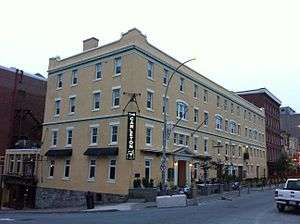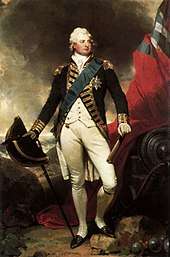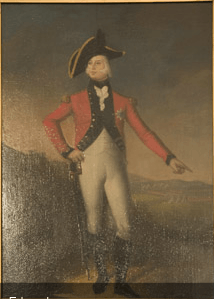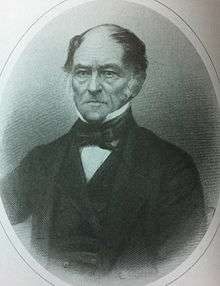The Carleton
The Carleton (also known as the Carleton House and Carleton Hotel) is a building on Argyle Street in Halifax, Nova Scotia, built in 1760 as the home of Richard Bulkeley. Apart from two churches, Bulkeley's home is the oldest building in Halifax, Nova Scotia (1760).[1] It was reported to have been made from the ruins of Fortress Louisbourg. Since 1786 his residence has been known as "The Carleton".[2]

History
Bulkeley built his new home on Argyle Street on the land of Captain James Bannerman, who died during Father Le Loutre's War in the Attack at Jeddore. He also had installed the black marble mantel from the Governor's house in the King's Bastion at Louisbourg.[3] He is also reported to have brought the stone from the ruins of Louisbourg (1758) to build the house. At his new home in the 1780s, Bulkeley regularly entertained the future King William IV (abolished slavery in British Empire; had an affair with Governor Wentworth's wife Francis) as well as Prince Edward (father of Queen Victoria).[4] He also held large levees there on New Year’s Day and the queen’s birthday, as well as dinners on St Patrick’s and St George’s days."[5]
He named his home Carleton House after Guy Carleton, 1st Baron Dorchester upon his visit to Halifax in 1786 and becoming governor general for the whole of British North America.[6][7] (Carleton ordered the creation of the Book of Negroes and oversaw the evacuation of escaped slaves (i.e., Black Loyalists) from New York to Nova Scotia.)
Bulkeley's widow eventually sold the residence to Henry Hezekiah Cogswell (1816).[8]
Guests and Patrons
See also
References
- Endnotes
- The two churches being St. Paul's Church (Halifax) and the Little Dutch (Deutsch) Church.
- See Image of original house
- J.S.M., p. 69
- J.S.M.., p. 80, p. 85
- Bulkeley. Canadian Biography
- In 1786 Carleton became governor general for the whole of British North America in order to provide the basis for a union of the remaining British colonies. Eventually, however, the government decided to create only a “multiple” governor-in-chief, who would hold separate commissions as governor of Quebec, Nova Scotia, and New Brunswick (each of which was to have its own lieutenant governor as well) and who would be able to exercise his authority over any one of these colonies only when he was in it. (In 1784, Great Britain divided Nova Scotia into two — New Brunswick and Nova Scotia. Colonel Thomas Carleton, younger brother of Guy Carleton, was named New Brunswick's first lieutenant-governor — a position he held for the next 30 years.)
- W.J.Eccles France in America p.247
- J.S.M., p. 86
Texts
- Peter, Landry. "Historical Biographies, Nova Scotia: Richard Bulkeley (1717-1800)". www.blupete.com. Retrieved 2008-08-31.
- Blakeley, Phyllis R (1979). "Bulkeley, Richard". In Halpenny, Francess G (ed.). Dictionary of Canadian Biography. IV (1771–1800) (online ed.). University of Toronto Press. Retrieved 2008-10-05.
- J.S.M., "Richard Bulkeley" in Collections of the Nova Scotia Historical Society, vol. 12 (1905) p. 62.
- Carleton House: Living history in Halifax by Erickson, Paul A., and Duffus, Graeme F., and Heritage Trust of Nova Scotia



